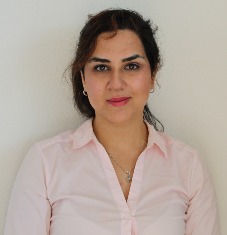Research profile Samira Rezaei

Samira Rezaei graduated on 27 of June 2022 on Deep learning in high angular-resolution radio interferometry.
Samira: I am starting my new job as a postdoc researcher in Leiden University. This postdoc is entitled "Artificial Intelligence (AI) applied to Astronomy '' which also indicates my interests precisely.
With my background in computer science, my multi-disciplinary PhD between the two departments of computer science and astrophysics gave me a unique opportunity to collaborate with astronomers.
My research is focused on applying data science techniques on radio astronomical datasets, in particular to the collected data from Very Long Baseline Array (VLBA) and LOFAR. In the future, I am planning to broaden this by exploring the new challenges raised in the big data era with the next generation of astronomical instruments.
DSSC Project: Methods for automated and robust analysis of astronomical data
This project (Kapteyn, JBI and ASTRON) will focus on methods for automated and robust analysis of astronomical data taken with the Low Frequency Array (LOFAR). The Early Stage Researcher will develop sophisticated calibration methods that connect astronomy and complex data systems, as part of a project on Advanced Instrumentation and Big Data. They will use novel computing science methods to analyse data from the LOFAR radio interferometer, built and operated by ASTRON. LOFAR is the world’s largest connected radio telescope that is optimised to operate a low radio frequencies at arc-second angular resolution. The student will develop new techniques for the automated and robust analysis of the data taken with the International LOFAR Telescope, which includes signals from the stations both within the Netherlands and throughout Europe. This data stream will be used to investigate the low energy radiation from supermassive black holes at the highest possible angular resolution to investigate particle acceleration and energetics in the Universe’s largest natural particle accelerators. This will be done by combining the resolving power of LOFAR and the added magnification provided by gravitational lensing to study black hole physics at redshifts where the active phase from such objects is expected to peak, and have the largest influence on the build-up of the stellar host galaxy. The computing science will involve developing automated methods for identifying such objects from the LOFAR all-sky surveys data. The novel analysis tools developed in this project line will be made available to the community.
Key Words: Galaxy formation; Gravitational lensing; Black Holes
Fields of expertise involved: Radio Astronomy; Interferometry; Advanced calibration; Machine Learning
